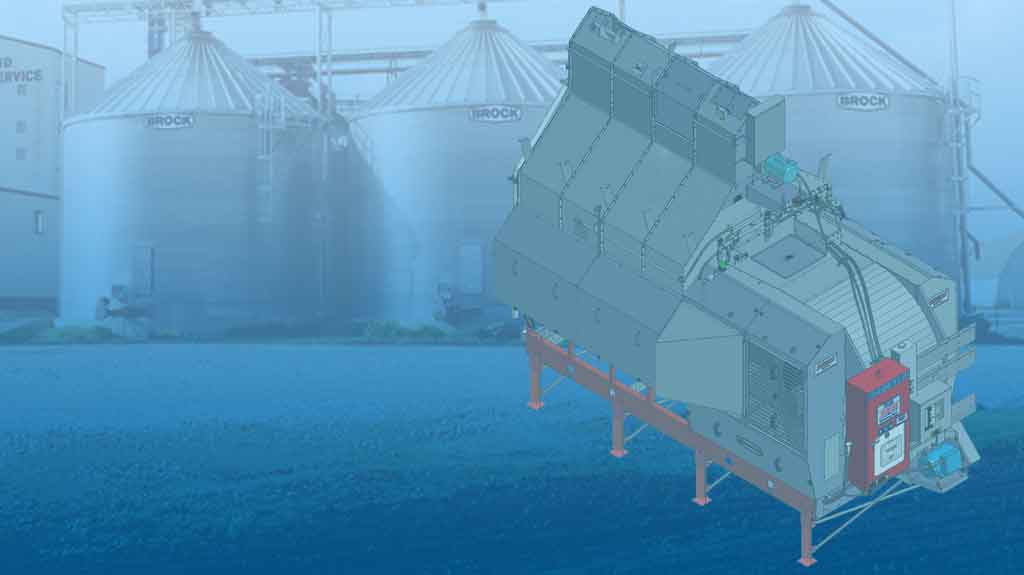
Fire SAFETY can prevent loss of life and property
Taking preventive measures will help increase your chances to avoid a Dryer fire. Dryer fires can be especially costly because they can be hard to locate, hard to extinguish, and pose the potential for secondary fuel explosions. Injuries and fatalities occur annually from Dryer fires and secondary fires. There may also be fines/penalties and insurance consequences, long shutdowns for inspection, evaluation, and rebuilding. Fires have an increased chance of happening when weather or grain conditions have been extra dry or when grain is exceedingly wet. Weeks of hot, dry weather can provide extremely dry, harvested material, chaff and foreign particles—which can become fuel for Dryer fires.
Four Main Causes of Dryer Fires
1. Lack of Dryer cleanliness
Fines and chaff are notorious for causing Dryer fires when the Dryer is not kept clean. When fines or debris accumulate on the Dryer floors or walls, they become extremely dry and combustible. When trash passes through the Burner it may ignite and burn out quickly on the Plenum Floor. Although this is normally no more than a spark, it is enough to ignite the pile of combustible debris and start a fire that may spread to the rest of the Dryer.
Good Dryer housekeeping reduces fire risk. Inspect this Dryer DAILY when in use for debris on the Heat Plenum Floor and inside Screens. Make periodic inspections of the Dryer as described in the Preventive Maintenance section on the Quantum® H2M. Clean as required.
Be sure the Dryer is clean and operating efficiently. Chaff can be sucked through the Fan into the Burner and Air Duct. Excessively dirty Dryers can form “hot spots” or a slower grain column, which can ignite because some material is exposed to high temperatures longer than other grain areas.
Keep the ground area and concrete pad around the Dryer clean and free of obstacles to provide easy access in case of emergency, reduce the possibility of fire, tripping, and to avoid interference with Dryer function (i.e., suction of debris into the Dryer). Be vigilant to clean scraps of wire, etc., if accessories are installed later.
2. Excessive Burner Flame
Burner flames may become excessive when the grain seal is broken due to inadequate filling. The Burner control tries to maintain temperature and make up for lost heat. Typically this can occur when incoming moistures are low and the fill system is struggling to keep up with the Dryer discharge rate. This heat and combustible material combination pose a risk of fire.
Reduce unload rate limits below the fill rate. Don't take grain out faster than it is put in.
3. Blocked Dryer Column
Over-drying a non-moving area in a blocked column creates a hot spot that can become a fire. Bridging of grain in a grain column can be caused by a large foreign object in the column, grain left in the Dryer too long and too wet since its last operation, or freezing of the grain since its previous run. Sometimes grain below the bridge creates a loss of grain seal and causes excessive Burner flame. Check that all columns are flowing when restarting the Dryer, if it has been: 1)shut down for an extended period of time, or 2) shut down in freezing conditions—conditions which can cause crusting.
4. Running excessive Burner temperatures to hurry the drying process
This occurs typically at the beginning of season when moistures are high and the drying process is slow, or the end of the season when no adjustment has been made to drying temperatures for lower moisture grain. Also, it is not necessary to run the Burner in extreme cold at the same temperature as it would be run in warmer weather. Both the Burner and the dryness of the plenum air are directly related to temperature rise. Set plenum temperatures lower during cold weather.
Copyright © 2014-2016 CTB, Inc. All rights reserved BL0815